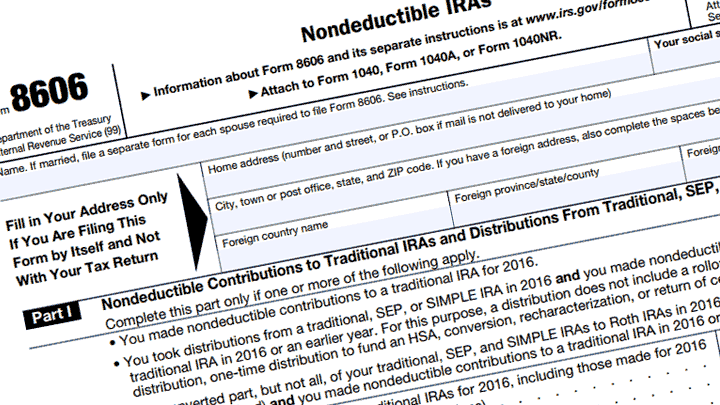This newsletter complements the discussion of Roth IRA tax planning opportunities began last month with our analysis of the combined DISC/Roth IRA planning technique. Expanding upon that specialized strategy, this newsletter will focus on the use of “backdoor” Roth IRA contributions to bypass income limits on direct contributions to Roth IRAs.
The Roth IRA is famous as one of the few tax shelters available to the middle-class. Faced with the decline of employer-sponsored pensions, Congress created a tax shelter to encourage working and middle class taxpayers to invest in their own retirement. The vehicle Congress created enables taxpayers to contribute after-tax dollars today in exchange for the ability to receive future investment income earned by the Roth IRA free of federal (but not necessarily state) income tax. What could be better? Many believe (wrongly) that Roth IRAs are only available to the middle class. This half-truth has persisted for years, grounded on the basis that direct contributions to Roth IRAs are subject to income limitations. Fortunately, Congress saw fit to leave the backdoor open, enabling wealthier taxpayers to also utilize Roth IRAs through an indirect funding process.
For tax year 2017, a taxpayer with adjusted gross income of less than $118,000.00 may directly contribute up to $5,500.00 to a Roth IRA. Taxpayers who are married filing jointly face an adjusted gross income limitation on direct contributions of $186,000.00. Taxpayers earning in excess of these income limitations may still make ratably reduced direct Roth IRA contributions so long as adjusted gross income does not equal or exceed $133,000.00 for single taxpayers or $196,000.00 for taxpayers married filing jointly. Higher earning taxpayers need not abandon using a Roth IRA, however, as a Roth IRA may be funded indirectly through the conversion of a Traditional IRA into a Roth IRA.
Taxpayers earning in excess of the Roth IRA direct contribution income limits can make nondeductible contributions to Traditional IRAs and then later instruct the account custodian to convert the Traditional IRA to a Roth IRA. This arrangement is commonly referred to as a “backdoor Roth IRA.” The conversion is expressly authorized by the Internal Revenue Code and is not constrained by income limitations. There are also no limits on the number of conversions that can be performed. High earning taxpayers may make nondeductible contributions to Traditional IRAs each year and thereafter convert the funds into Roth IRA funds.
The backdoor Roth IRA is still not appropriate for all taxpayers. Depending on the circumstances, taxpayers who invest in Traditional IRAs funded with pre-tax and/or deductible contributions may incur federal income tax at ordinary income rates on a ratable portion of any Traditional IRA balance converted into a Roth IRA.
Before pursuing a backdoor Roth IRA strategy, taxpayers should be aware of the potential costs as well as the unique characteristics and interplay of Roth IRAs and overall estate planning. The interplay is particularly important for taxpayers engaged in more advanced planning, such as the combination DISC/Roth IRA strategy discussed in our most recent newsletter. Taxpayers with more advanced planning concerns must contend with other tax issues such as the step-transaction doctrine which, without proper planning, may enable the IRS to recast a series of transactions into the manner that best serves the government instead of the taxpayer.
The tax and estate planning attorneys at McLaughlinQuinn LLC regularly counsel clients as to the strategic use of tax advantageous accounts such as Roth IRAs and their relationship to the estate planning process. For more information on this newsletter, contact Cory J. Bilodeau, Esq., Tax and Estate Planning Partner or Matthew R. Joyce, Esq.

